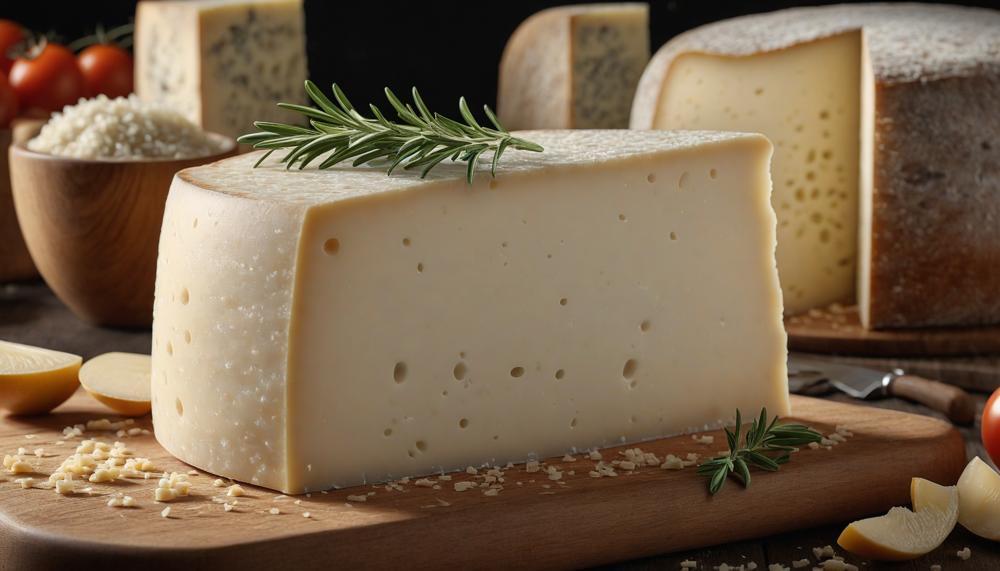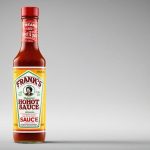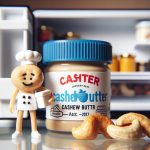Pecorino Romano is a beloved hard cheese from Italy, renowned for its sharp flavor and impressive longevity, thanks to its high salt content. If you’ve got a wedge of this delightful cheese in your fridge, you’re probably wondering just how long you can savor its distinct taste.
Key Takeaways:
- Unopened Shelf Life: When stored in the refrigerator at temperatures below 40°F (4°C), an unopened Pecorino Romano can last up to three to four months.
- Opened Shelf Life: Once you’ve cracked it open, it can still last several weeks to a couple of months if wrapped properly in parchment paper and kept in the cheese drawer or vegetable crisper.
- Freezing: For those looking to extend its life even further, freezing is an option. Pecorino Romano can be frozen for up to six months, though this may change its texture.
- Spoilage Indicators: Keep an eye out for changes in texture and any off smells, which are clear signs the cheese has gone bad.
- Storage Tips: Always store Pecorino Romano in the refrigerator and avoid leaving it at room temperature for extended periods.
Pecorino Romano isn’t just long-lasting; it’s incredibly versatile. Grate it over pasta, pizzas, stews, soups, or salads, or enjoy it on a cheese board with fruits and nuts.
Its higher salt content compared to Parmesan gives it a distinct, bright saltiness that’s hard to resist. Plus, being a product of specific regions in Italy under PDO status, it brings a unique flavor and texture tied to its heritage.
So, treat your Pecorino Romano well, and it will reward you with its rich, savory goodness for months to come.
Contents
Understanding Pecorino Romano
Pecorino Romano is a celebrated Italian cheese, renowned for its distinctive features and robust flavor. Here’s a detailed analysis of its key characteristics and flavor profile:
| Characteristic | Description | Details |
| Origin | Italy | Produced in specific regions including Lazio, Sardinia, and Grosseto, under PDO status ensuring traditional methods and authenticity. |
| Milk Source | Sheep’s Milk | Made exclusively from the milk of sheep grazing on herb-rich pastures, contributing to its unique taste and quality. |
| Texture | Hard and Granular | Pale yellow in color, aged for at least 5 months to develop its firm, crumbly texture ideal for grating. |
| Flavor Profile | Sharp and Tangy | Distinctive sharpness with tangy, earthy, and nutty notes. Its high salt content imparts a pronounced salty taste. |
| Aroma | Earthy and Nutty | Strong, savory aromas that reflect the rustic pastures of its origin. |
| Uses | Versatile Ingredient | Perfect for grating over pasta (like Cacio e Pepe), salads, pizzas, and more. Also used in global cuisines. |
| Pairings | Bold Red Wines | Pairs well with wines like Chianti or Sangiovese, whose tannins complement the cheese’s sharpness. |
| Health Benefits | Rich in Protein and Calcium | Beneficial nutrients but high in saturated fat and sodium; best enjoyed in moderation. |

Shelf Life Fundamentals
Several factors can significantly impact the shelf life of Pecorino Romano cheese:
Salt Content
- The high salt content in Pecorino Romano acts as a natural preservative, inhibiting bacterial growth and extending its shelf life compared to softer cheeses.
Storage Temperature
- Unopened Pecorino Romano stored below 40°F can last for three to four months due to its dense and hard texture. Once opened, the cheese can last from several weeks to a couple of months if tightly wrapped and refrigerated properly. Freezing the cheese can extend its edibility up to six months, though it may alter its texture.
Proper Packaging and Storage
- Proper storage methods, such as refrigeration in the cheese drawer or vegetable crisper, are crucial for maintaining quality and taste. Pecorino Romano should be tightly wrapped to prevent moisture loss and contamination. For long-term storage, vacuum-sealing before freezing is ideal.
Signs of Spoilage
- Visual cues like mold growth, discoloration, changes in texture, and off smells indicate spoilage and necessitate discarding the cheese.
Room Temperature Storage
- Room temperature storage is not recommended for extended periods to prevent spoilage and bacterial growth.
Aging Process
- The aging process, typically a minimum of eight months, contributes to its hard texture and long shelf life. Proper aging techniques ensure the cheese develops its characteristic flavor while maintaining safety and edibility.
Proper Storage Techniques
To ensure the longevity of Pecorino Romano cheese, follow these storage recommendations:
Refrigerator Storage
- Unopened: Keep Pecorino Romano in the refrigerator at temperatures below 40°F (4°C). This can maintain its quality for up to three to four months.
- Opened: Once the cheese is opened, wrap it tightly in parchment paper, then place it in the cheese drawer or vegetable crisper. This method preserves its freshness for several weeks to a couple of months.
Freezing Option
- For extended storage, freeze Pecorino Romano. Wrap it in paper, then aluminum foil, or place it in a freezer bag. This can prolong its lifespan up to six months. When ready to use, thaw the cheese slowly in the refrigerator to maintain its texture and flavor.
Pantry Storage Caution
- Avoid storing Pecorino Romano at room temperature for long periods. If necessary, keep it in a cool, dark pantry, away from direct sunlight, with temperatures ranging from 50°F to 60°F (10°C to 15.5°C) for short durations.
Spoilage Check
- Regularly inspect the cheese for any signs of spoilage. Look for visual cues like mold, changes in texture, or unusual smells to determine if the cheese is still safe to eat.
Key Factors
- The high salt content of Pecorino Romano acts as a natural preservative, inhibiting bacterial growth. Proper wrapping is essential; use parchment paper followed by aluminum foil or freezer bags to prevent moisture loss and odors while allowing the cheese to breathe.
Comparisons
- When comparing Pecorino Romano to other cheeses like Parmigiano-Reggiano, note the differences in aging processes and salt content, which can affect shelf life variations.
Signs of Spoilage
When it comes to Pecorino Romano cheese, identifying spoilage is crucial to avoid potential health risks. Here are the common signs that indicate this cheese has gone bad:
| Sign | Description | Details |
| Visual Changes | Presence of mold or unusual discoloration | If you see blue, green, or black spots, it’s a clear sign of mold. Even though some cheeses can have mold as part of their production process, Pecorino Romano should not. |
| Odor | Foul smell | The cheese should have a tangy, nutty aroma. A sour, rancid, or ammonia-like smell indicates spoilage. |
| Texture Changes | Softness, sliminess, or graininess | Fresh Pecorino Romano is firm and slightly crumbly. If it feels overly soft, slimy, or unusually grainy, it’s best to discard it. |
| Taste | Bitter or off-flavor | The flavor should be sharp and salty. A bitter or off-taste can mean the cheese has spoiled, although tasting might not be the safest first step. |
Culinary Applications
Pecorino Romano cheese, a versatile hard cheese, adds a tangy and sharp flavor to many dishes, enhancing both simple and complex recipes. Here are some common culinary uses for Pecorino Romano:
Pasta Dishes:
- Cacio e Pepe: This classic Roman dish highlights Pecorino Romano with just black pepper and pasta, creating a creamy, flavorful sauce.
- Pasta alla Gricia: A simple yet delicious pasta dish that pairs Pecorino Romano with guanciale (Italian cured pork cheek).
- Carbonara: Another Roman favorite where Pecorino Romano combines with eggs, guanciale, and black pepper for a rich, silky sauce.
Vegetable Dishes:
- Italian Stuffed Peppers: Add grated Pecorino Romano to the stuffing for a sharp, savory flavor.
- Roasted Vegetables: Sprinkle Pecorino Romano over roasted vegetables like Brussels sprouts or asparagus for an added punch of flavor.
Bread and Baked Goods:
- Everything Parmesan-Pecorino Savory Shortbread: These savory cookies get a delightful twist with Pecorino Romano.
- Focaccia: Incorporate Pecorino Romano into the dough or sprinkle on top for a cheesy, tangy finish.
Salads and Side Dishes:
- Sundried Tomato Pasta Salad with Artichoke Hearts: Pecorino Romano adds depth and complexity, pairing well with sun-dried tomatoes and artichokes.
- Creamy Parmesan Polenta: Replace or combine Parmesan with Pecorino Romano for a richer, tangier taste.
Meat Dishes:
- Stuffed Chicken: Fill chicken breasts with a mixture of Pecorino Romano, spinach, and herbs for a flavorful stuffing.
- Meatballs: Mix grated Pecorino Romano into meatball mixtures for enhanced taste and texture.
Desserts:
- Cacio e Pepe Churros: A unique dessert where Pecorino Romano is used in the dough for a savory twist.
Comparing Pecorino with Parmesan
Pecorino Romano and Parmesan are both iconic Italian cheeses, but they have distinct differences in flavor and texture.
| Cheese | Milk Source | Flavor Profile | Texture | Uses |
| Pecorino Romano | Sheep’s milk | Sharp, salty, tangy with nutty undertones | Firm and crumbly | Grating over pasta (e.g., carbonara), salads, pairs well with fruits, honey, and red wine |
| Parmesan (Parmigiano-Reggiano) | Cow’s milk | Nutty and savory with hints of sweetness | Firm and granular | Grating over pasta (e.g., risotto), salads, enhances dishes like pasta Bolognese and fettuccine Alfredo |
Legal and Geographic Significance
Legal regulations and geographic factors profoundly affect the shelf life of Pecorino Romano cheese. The Protected Designation of Origin (PDO) status, granted under EU law, plays a crucial role.
This status mandates that Pecorino Romano must be produced in specific regions of Italy—Lazio, Sardinia, and Tuscany—using traditional methods and local resources.
These stringent regulations ensure that the cheese retains its high quality, consistency, and distinctive flavor profile, which are key to its long shelf life.
Impact of PDO Status
| Aspect | Regulation | Impact on Shelf Life |
| Production Methods | Traditional, regulated by PDO | Maintains consistent quality and preservative properties |
| Ingredients | Locally sourced sheep’s milk | High salt content acts as natural preservative |
| Geographic Origin | Lazio, Sardinia, Tuscany | Specific climate and resources enhance preservation |
Geographic Factors
The regions of Lazio, Sardinia, and Tuscany provide unique climatic conditions that are ideal for the production of Pecorino Romano. These areas have a long tradition of sheep farming, and the local sheep breeds produce milk that contributes to the cheese’s longevity.
The environmental factors, including temperature and humidity, during the cheese’s aging process, are optimized to enhance its shelf life.
Storage and Preservation
When stored correctly, Pecorino Romano can last several months. Unopened, it should be kept in the refrigerator at temperatures below 40°F (4°C) and can remain fresh for three to four months. Once opened, it should be wrapped tightly in parchment paper and stored in the refrigerator, where it can last for several weeks to a couple of months.
Freezing the cheese can extend its edibility up to six months, although this may affect its texture.
In summary, the legal and geographic factors surrounding Pecorino Romano cheese—particularly its PDO status and the traditional production methods in specific Italian regions—significantly enhance its shelf life by ensuring high quality and optimal preservation conditions.
How Long Does Manchego Cheese Last?
The short answer is Manchego cheese can last for up to 6 months when stored correctly in the fridge.
Manchego cheese, a beloved Spanish cheese made from sheep’s milk, has a fairly long shelf life if you handle it properly. To maintain its freshness and distinctive taste, follow these guidelines:
- Storage: Keep Manchego cheese in the refrigerator at a temperature between 34°F (1°C) and 38°F (3°C). Wrap it tightly in wax paper or parchment paper, and then place it in a plastic bag or airtight container. This prevents it from drying out and protects it from other strong odors in the fridge.
- Moisture Control: Ensure there’s minimal exposure to moisture. Excess moisture can promote mold growth, which can spoil the cheese.
- Check for Mold: If mold develops, it can often be cut off. For hard cheeses like Manchego, it’s safe to remove at least an inch around the mold spot, but ensure no mold traces are left behind.
- Freezing: Though not recommended for the best quality, Manchego cheese can be frozen for longer storage. If you opt to freeze it, wrap it in aluminum foil and place it in a freezer bag. Thaw it in the refrigerator when ready to use, but note that the texture may change slightly.
How Long Does Neufchâtel Cheese Last?
Neufchâtel cheese, with its roots tracing back to Normandy, can last quite a while if stored correctly. Here’s what you need to know to keep it fresh:
- Unopened Neufchâtel: When kept in the fridge at temperatures between 35°F to 40°F (1.5°C to 4.5°C), it can last up to 2 months past its printed expiration date. The key is to ensure the packaging remains intact to prevent contamination and moisture loss.
- Opened Neufchâtel: Once opened, it should be wrapped in its original packaging or placed in an airtight container. This can extend its freshness for another 1 to 2 weeks.
- Freezing: Neufchâtel can be frozen for up to 2 months. However, freezing may alter its creamy texture. If you opt for this method, thaw it in the refrigerator rather than at room temperature to maintain quality as much as possible.
For homemade Neufchâtel, meticulous attention to ingredient selection, the production process, and proper aging are crucial. Once made, store it similarly to commercial varieties to enjoy its rich, smooth taste over time.
Conclusion
Enjoying Pecorino Romano at its best involves knowing how to store and handle it properly. This cherished Italian cheese, known for its sharp, tangy flavor and firm texture, can last quite a while under the right conditions.
Key Points to Remember:
- Unopened Storage: Keep it in the fridge below 40°F (4°C), and it’ll stay fresh for up to three to four months.
- Opened Storage: Once you’ve started using it, rewrap it tightly in parchment paper and place it in the cheese drawer or vegetable crisper. This way, it remains delicious for several weeks to a couple of months.
- Freezing Option: You can freeze Pecorino Romano for up to six months. While freezing may alter its texture slightly, it’s a great way to extend its usability.
- Spoilage Signs: Always watch for changes in texture and smell. Mold, unusual discoloration, or an off smell means it’s time to discard the cheese.
- Proper Handling: Keep it tightly wrapped and avoid leaving it at room temperature for extended periods.
Versatility and Heritage
Pecorino Romano isn’t just long-lasting; it’s also incredibly versatile. Grate it over your favorite pasta, pizzas, soups, or salads.
Its distinct saltiness and sharp flavor, a product of its rich heritage and high salt content, make it a delightful addition to any dish.




